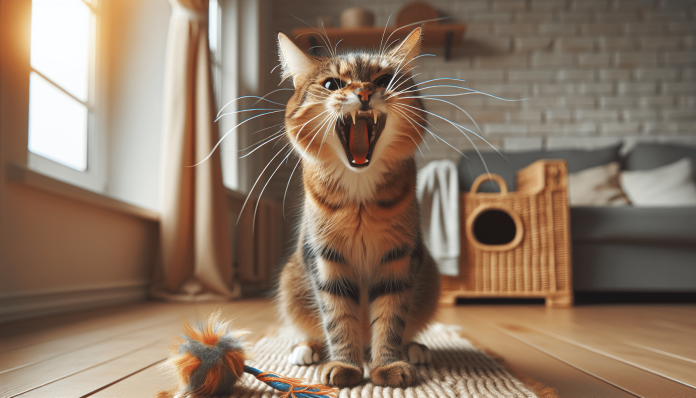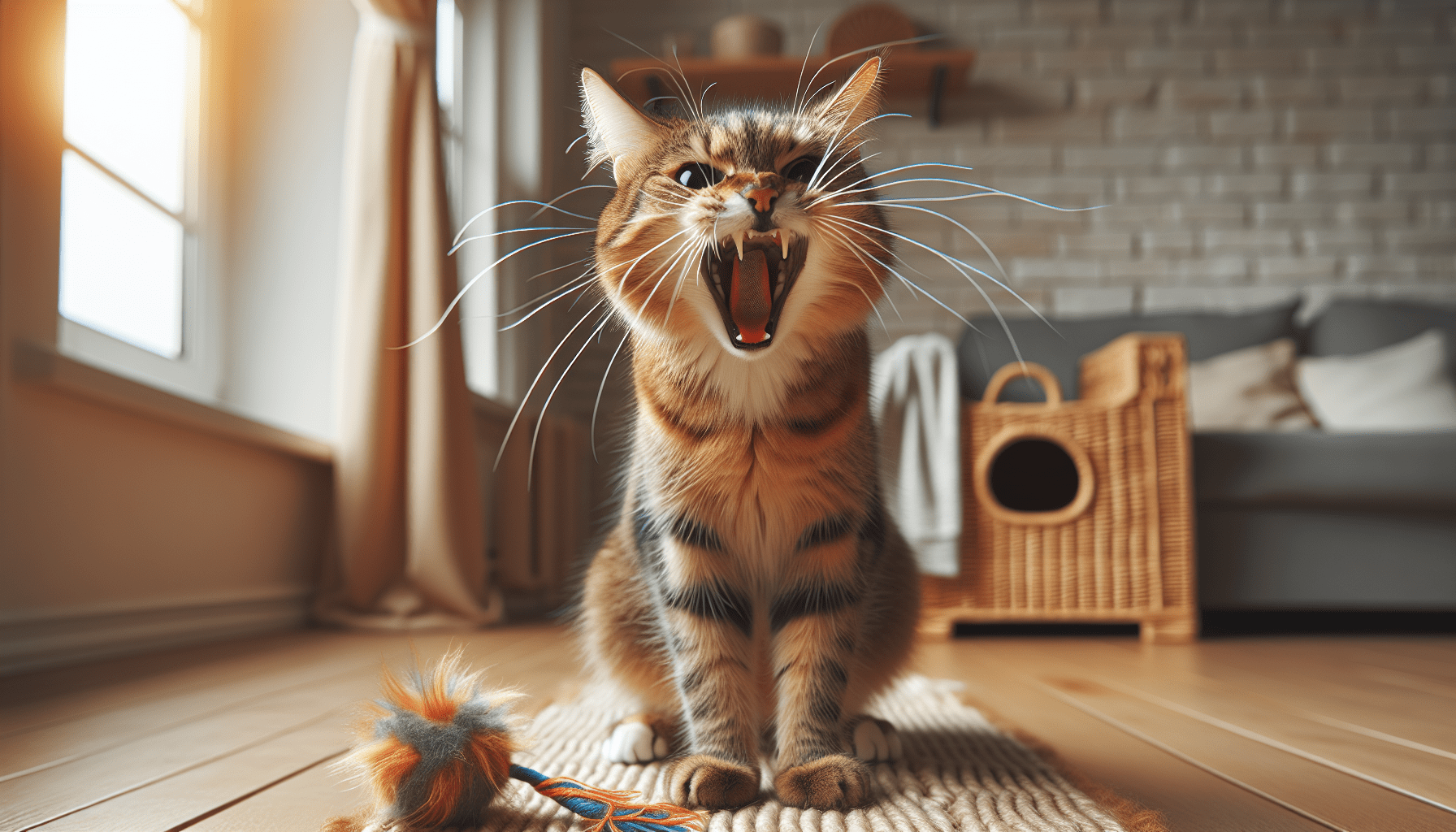
Cats are often seen as delicate, elegant creatures, yet they harbor an inner wild side reminiscent of their larger feline relatives. The idea of teaching your cat to “roar” might sound whimsical, but it taps into the fascinating behavior of these domesticated predators. In this article, we’ll delve into the playful and educational journey of bringing out your kitty’s roar. Learn the steps, benefits, and fun facts about cat vocalizations. Welcome to the ultimate guide on “How to Roar Kitty” 🦁🐱.
Understanding Cat Vocalizations 🐱🔊
The Basics of Cat Sounds 🐱🎵
Cats have a diverse range of sounds they use to communicate, including:
- Meowing: Primarily used to communicate with humans.
- Purring: Often associated with contentment, though it can also indicate distress.
- Hissing: A defensive sound made when a cat feels threatened.
- Chirping/Chattering: Typically heard when a cat is watching birds or small animals, expressing excitement or frustration.
- Growling: Indicates anger or fear.
The Myth of the Cat Roar 🦁📜
Unlike their big cat cousins, domestic cats (Felis catus) cannot roar. This ability is exclusive to members of the Panthera genus, which includes lions, tigers, leopards, and jaguars. However, domestic cats can produce impressive growls and other vocalizations that mimic a roar in spirit if not in volume.
Steps to Encourage Your Cat to “Roar” 🐱🦁
Step 1: Understand Your Cat’s Personality 😺🔍
Not all cats are vocal. Some breeds, like Siamese cats, are naturally more talkative. Understanding your cat’s personality and preferences is crucial.
Step 2: Create a Stimulating Environment 🏡🌿
A stimulating environment can encourage vocal behavior. Consider:
- Toys: Interactive toys can engage your cat’s hunting instincts, prompting more vocalizations.
- Perches and Climbing Structures: High places can give your cat a sense of security and might encourage them to express themselves vocally.
Step 3: Use Positive Reinforcement 🎁👍
Reward your cat when they make growling or similar sounds. Positive reinforcement can include:
- Treats: Small, healthy treats can motivate your cat to repeat the behavior.
- Praise: Use a happy, encouraging tone to praise your cat when they vocalize.
Step 4: Engage in Play 🧶🐾
Interactive play mimicking hunting can bring out more vocal behaviors. Use toys that simulate prey to encourage your cat to growl and become more vocal.
Step 5: Mimic the Sounds 🗣️🐱
Cats often mimic sounds they hear. Try growling or making low, rumbling noises during playtime. Your cat might start to imitate these sounds.
Step 6: Monitor and Adjust 📊🔄
Observe how your cat responds and adjust your techniques accordingly. Each cat is unique, and what works for one might not work for another.
Benefits of Encouraging Vocalization in Cats 🐱❤️
Improved Communication 🐾🗣️
Encouraging vocalization can enhance your bond with your cat, improving mutual understanding and communication.
Mental Stimulation 🧠🎾
Vocal activities can provide mental stimulation, preventing boredom and related behavioral issues.
Physical Exercise 🏃🐱
Interactive play and activities that encourage vocalization also promote physical exercise, keeping your cat healthy and fit.
Fun Facts About Cat Vocalizations 🐱🎤
Purring Paradox 🐱❓
While purring is usually a sign of contentment, cats also purr when they are injured or in pain. The vibration frequency of purring is believed to promote healing.
Communication with Humans 🐱👫
Cats have adapted their vocalizations to communicate specifically with humans. They rarely meow at other cats past kittenhood.
Vocal Variety 🐱🎶
Cats can produce over 100 different sounds, far more than dogs, which makes them incredibly versatile vocal communicators.
Debunking Myths About Cats and Roaring 🦁🐱
Myth: Domestic Cats Can Roar 🐱🦁
As mentioned earlier, domestic cats cannot roar. The vocal cords of big cats like lions are different, allowing them to produce the deep, resonant roar.
Myth: Only Certain Breeds Are Vocal 🐱🔊
While some breeds are more naturally vocal, any cat can be encouraged to vocalize more through interaction and training.
Creating a Safe and Comfortable Environment for Vocal Training 🏡🐱
Safety First 🛡️🐱
Ensure that your cat feels safe and secure. Stress or fear can inhibit vocalization.
Comfort and Familiarity 🛋️❤️
Make sure your cat is comfortable with the training environment. Familiar toys and bedding can help.
When to Seek Professional Help 🐱👨⚕️
Behavioral Issues 🐱⚠️
If your cat shows signs of distress, aggression, or other behavioral issues, consult a veterinarian or a professional animal behaviorist.
Health Concerns 🐱🩺
Sudden changes in vocalization or behavior can indicate health problems. Regular check-ups with a vet are essential.
Conclusion: Embracing Your Cat’s Wild Side 🦁🐱
Teaching your cat to “roar” is a fun and engaging way to bond with your feline friend. While domestic cats can’t roar like lions, they have a rich repertoire of sounds that can be just as impressive and entertaining. By understanding your cat’s personality, creating a stimulating environment, and using positive reinforcement, you can encourage your cat to express their inner wild side.
Remember, the goal is not just to teach a specific behavior but to enhance the bond between you and your cat through playful and positive interactions. So, embark on this roaring adventure and watch as your kitty channels their inner lion! 🦁🐱



















